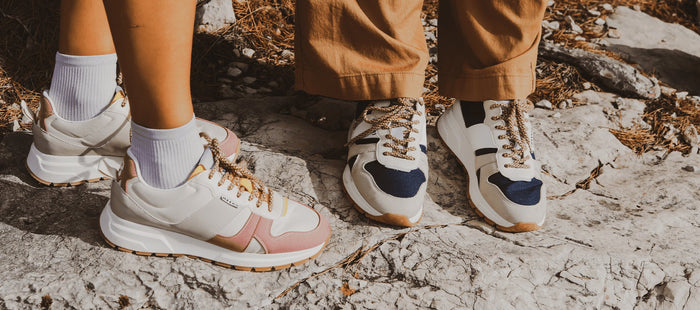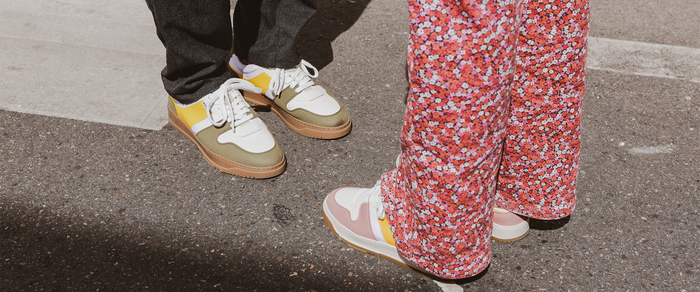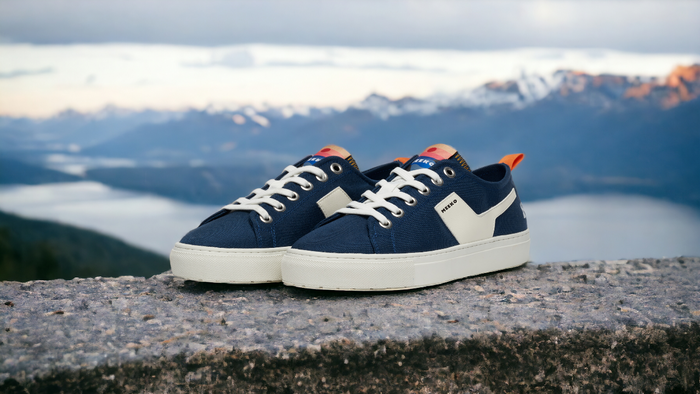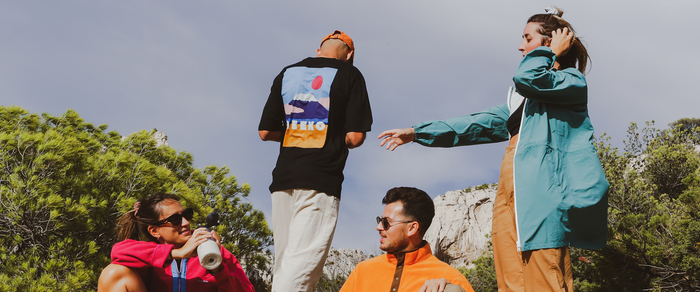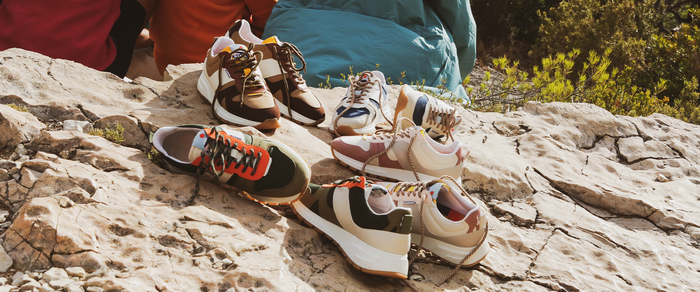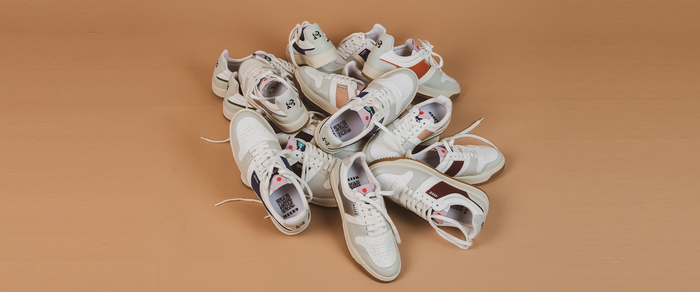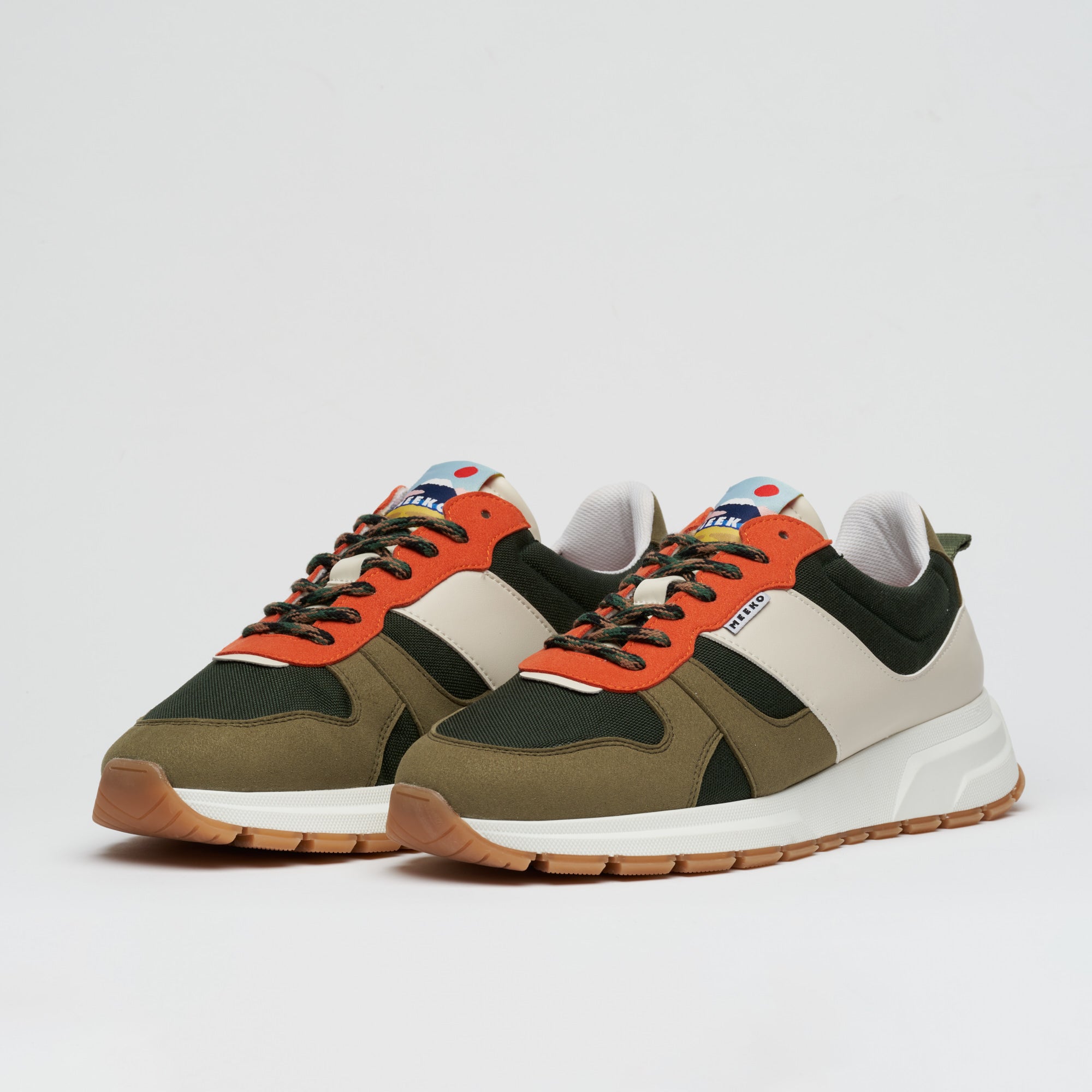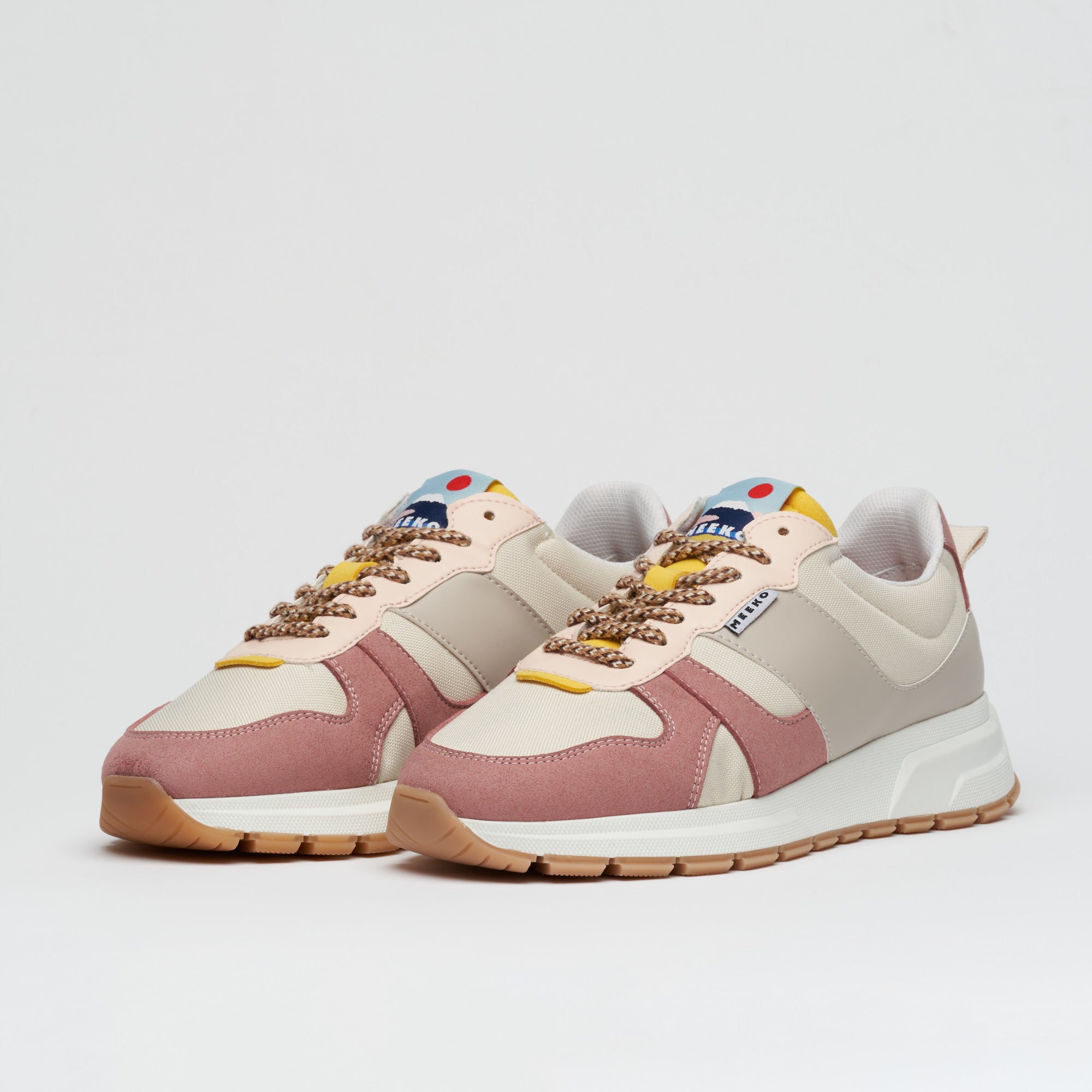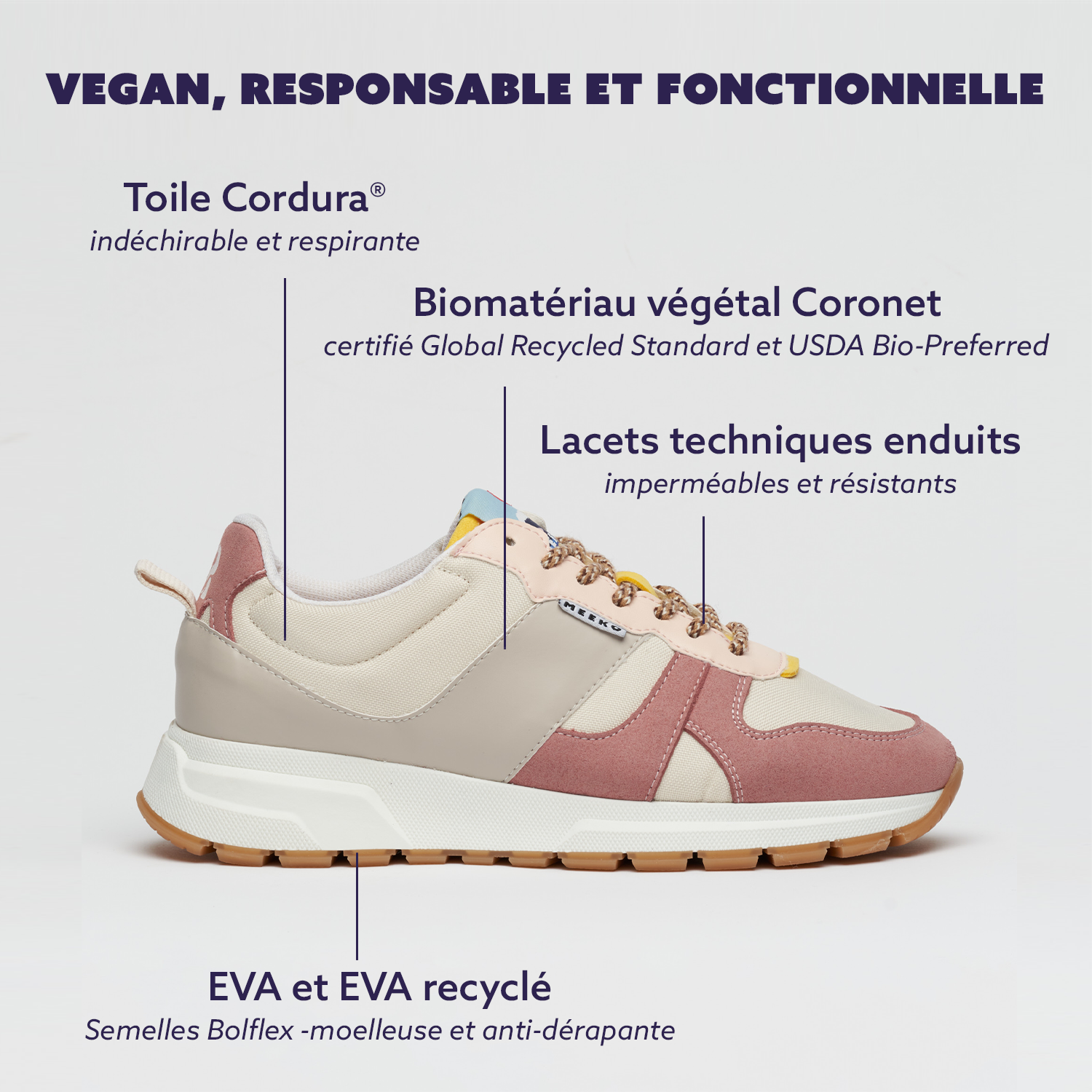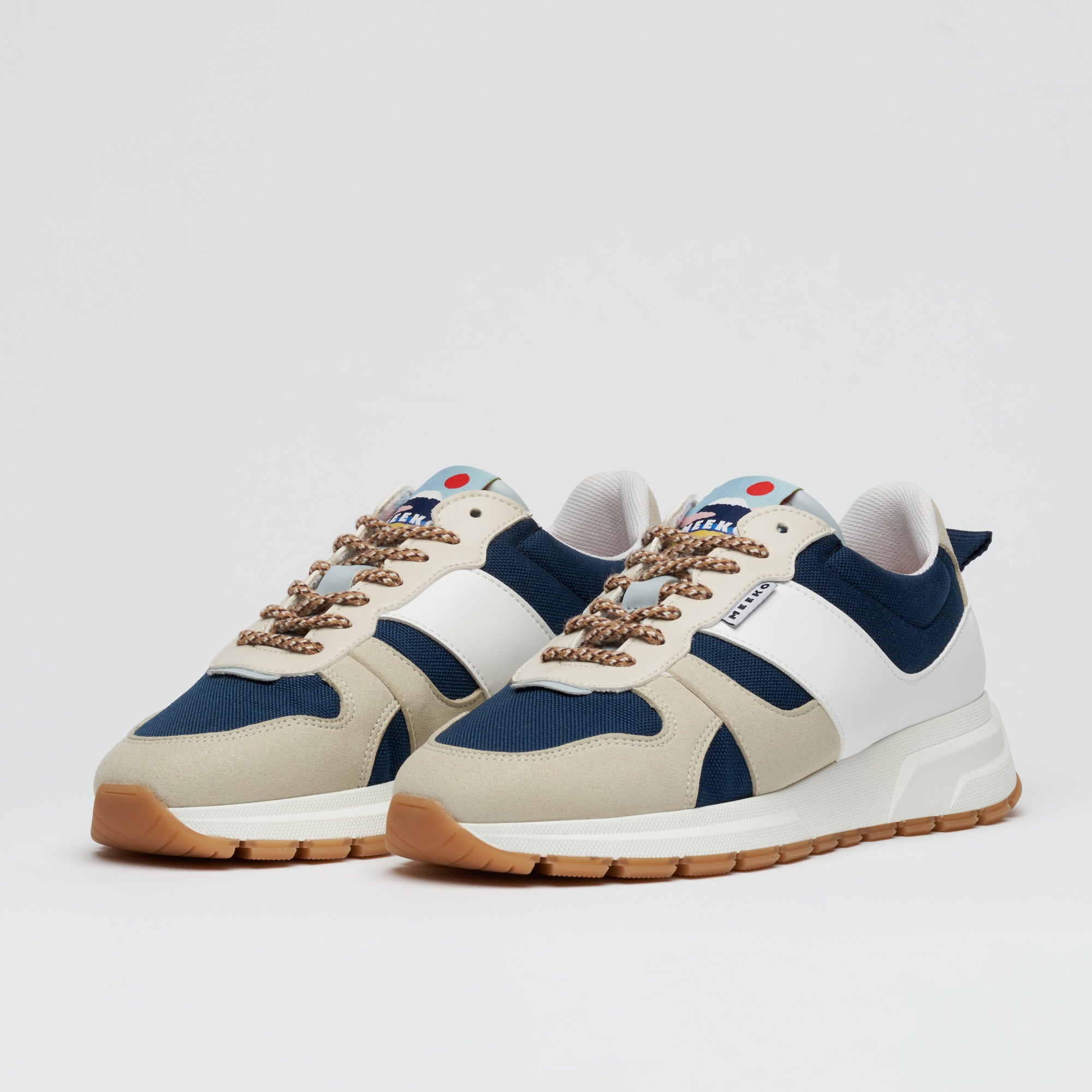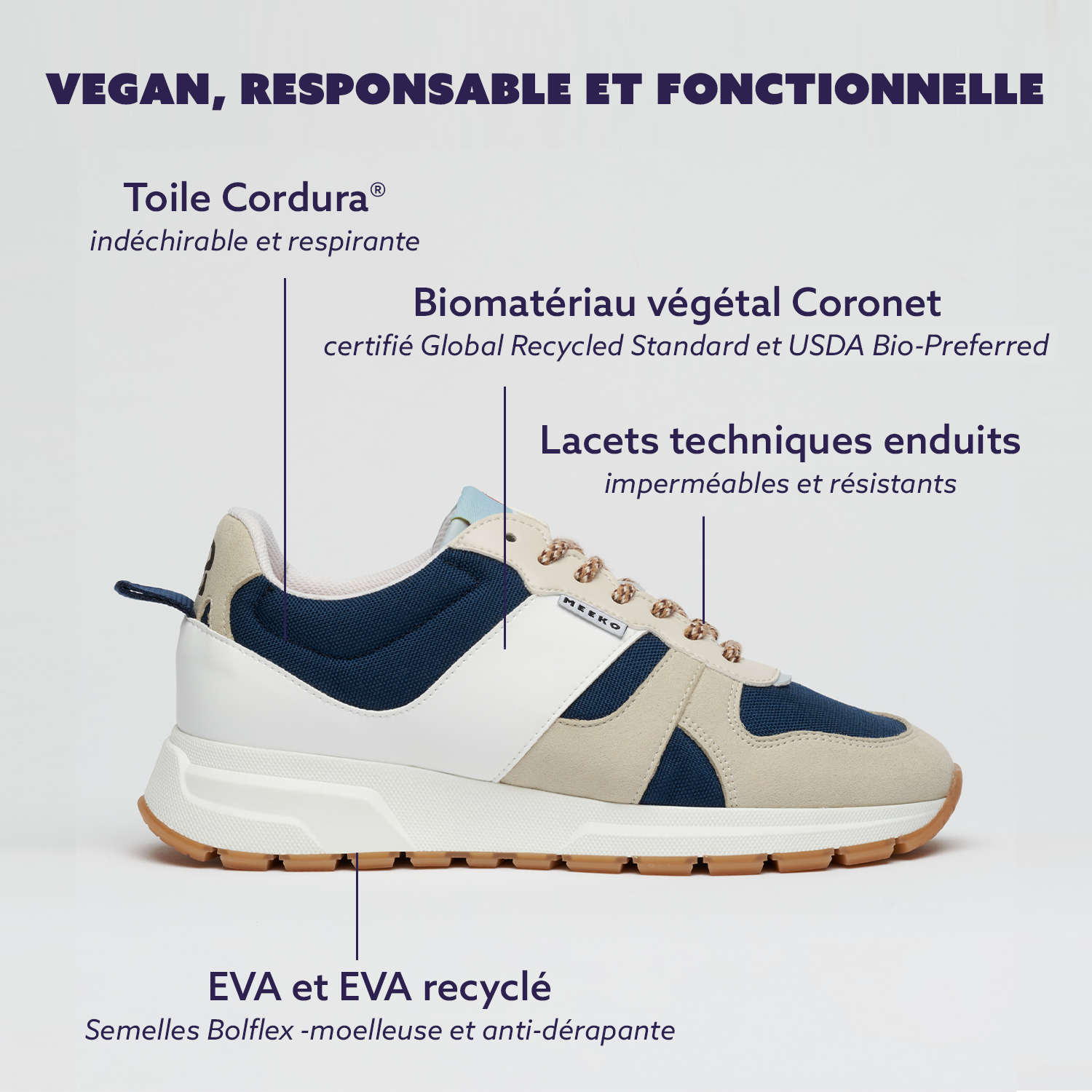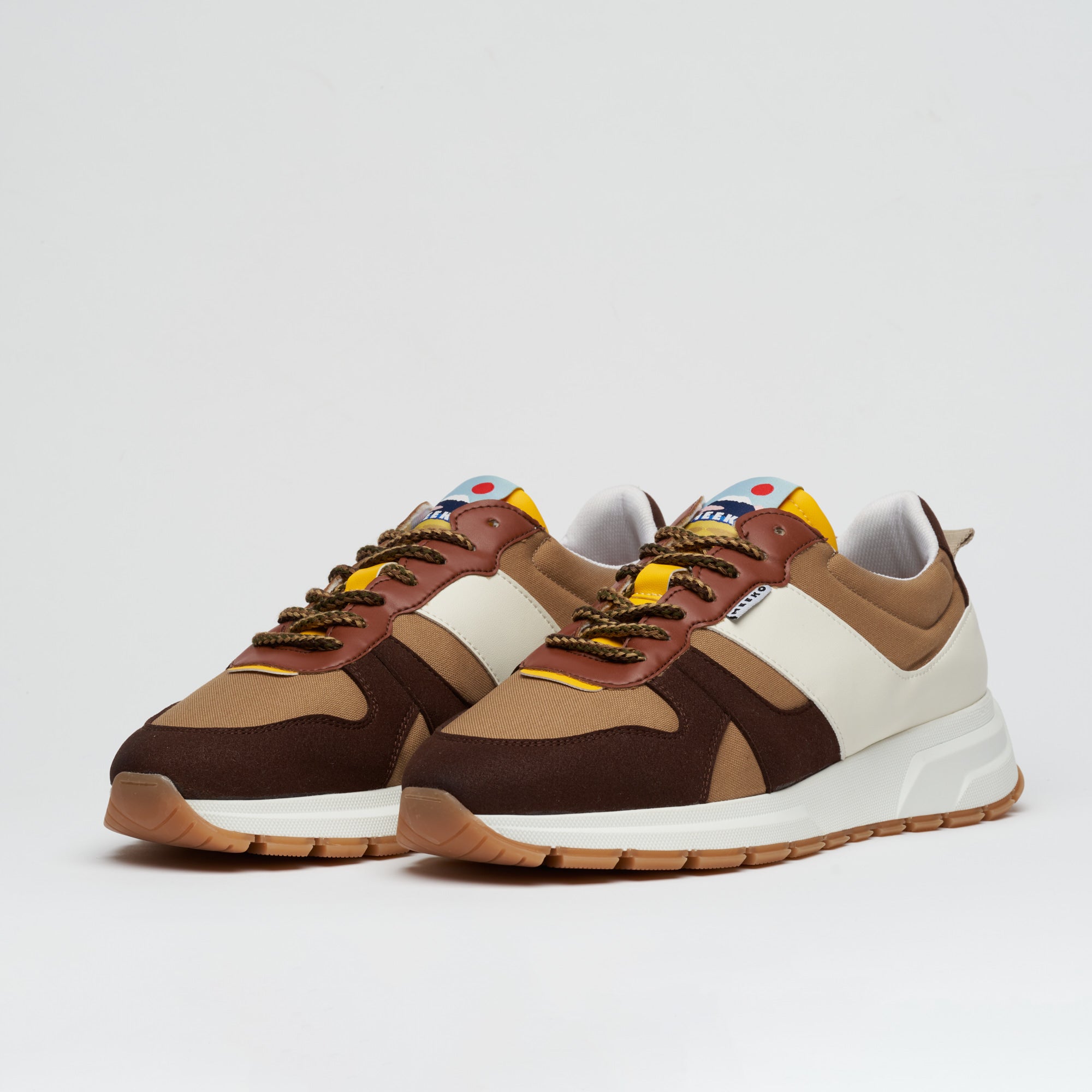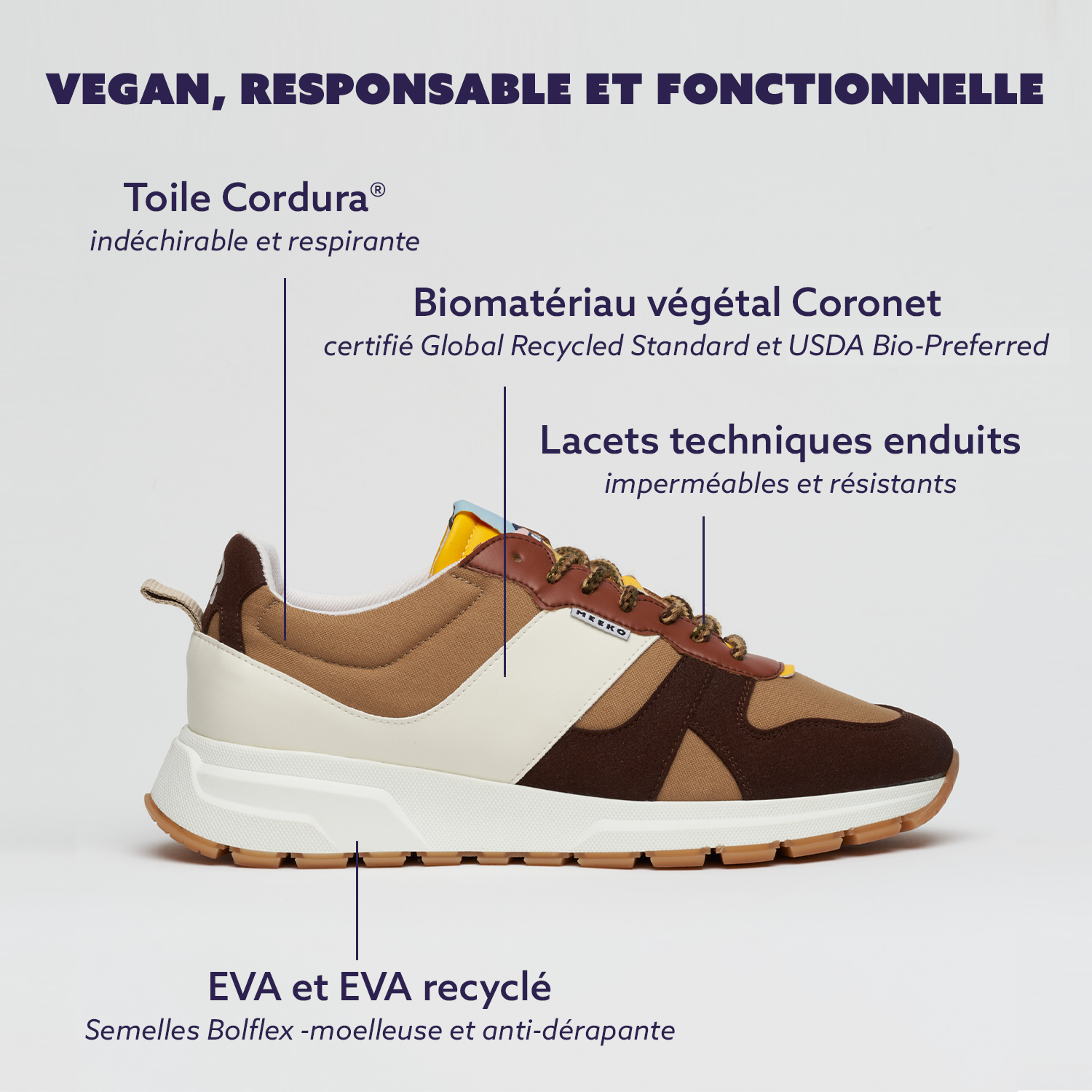Apple, grape, pineapple... Are we making a fruit salad or sneakers?
Sneakers in apple, grape, cactus, corn, coffee… Sustainable alternative or marketing trend?
Since we are preparing to launch MEEKO, we have witnessed a flowering of neo-materials aimed at replacing leather / imitation leather. In our desire to offer cleaner sneakers, we legitimately wondered what these materials were worth. In particular to potentially use it for the 2nd collection in 2021 (yes, we have the totally crazy ambition to be able to release a second collection).
What do we know about these materials? They have in common to be made up of plant or food waste (apple, grape, pineapple, corn, coffee, cactus for the best known). Alternatives often presented as 100% natural that brands and the media are snapping up, seeing it as a small ecological revolution. The problem is that when you try to find out a little more, you don't find a lot of information. Even on the supplier side.
What is behind these materials? What is their actual composition? What are their limits ?

Like Laurent Delamousse, we conducted the investigation. We interviewed various professionals in the sector to provide you with some answers.
NB: The purpose of this article is to inform you. In no case do we want to descend from brands whose initial approach is certainly full of goodwill but lacks a little transparency. Because by failing to admit that this approach is not perfect, that it has limits, they let consumers think that it is an easy fight. That the solutions are all found. This unfortunately discredits the commitments of all the other brands which are also trying to provide lasting responses to these issues.
A hybrid composition
It is customary to read that these materials are made “from…”. However, we do not really know what the natural part is really present. It is extremely rare to find a brand detailing the actual composition of the material that makes up 80% of its sneakers. The problem comes mainly from suppliers who themselves show a certain opacity on their site or brochure. The way to present the manufacturing process is always the same:
- Harvesting of natural raw materials (apple, grape, pineapple, etc.)
- Crushing, filtering + various operations on this waste

- Spreading the dough obtained (following this step 3) which, once dry, will have properties close to those of leather
Some suppliers speak of a "secret formula", others simply state that they do not use toxic chemicals. We are therefore entitled to ask ourselves: what is the real part of natural material and, above all, what is there in addition?
Two British doctors have embarked on an in-depth study of the databases of the components used by these factories. They then found that the main component is very often polyurethane (65%) when the share of natural material is around 30%. As a reminder, polyurethane (PU) is a plastic material that is found in most vegan alternatives to leather (imitation leather for example).

This therefore already poses a problem when we read in the media “100% natural”, “100% vegetable”, “without plastic”, etc. These confusions arise as often from the initial marketing of the brand, itself confused by that of the supplier.
You are going to tell us “it's already better than nothing, better a small part of natural rather than 100% plastic”. IT'S CRAZY WE TOLD THE SAME THING! Then we realized that this was not necessarily the case if we considered the durability of the product as a whole and not only via the raw materials that compose it.
If we focus on the carbon footprint specific to the materials used, we can possibly consider these hybrid neo-materials as more durable due to the share of natural components. And even that remains to be calculated when using Mexican cacti or Filipino pineapples. Does the 20 to 30% of natural materials compensate for the various processing operations + transport to Europe / France? To your calculators!

Solid, not solid? Biodegradable or bionot degradable?
From the start, we have approached product sustainability in the broad sense. From design to end of life. The resistance over time is a major characteristic to take into account. We don't have enough hindsight (and feedback) to say that these materials hold up less well over time than leather or imitation leather. Our factory simply informed us of the difficulty it had encountered working this kind of material for other customers.
What happens once our sneakers are ruined? When it comes to end of life, suppliers describe their material as “partially biodegradable”.
The problem is that a material is either biodegradable or it is not. The partially does not exist. Mixing natural components with plastic components complicates more than anything else the issue of recycling end-of-life products.
Give back to the earth? Not possible because not biodegradable. To recycle ? Much more complex and energy-consuming than if the material were 100% synthetic. Incinerate or landfill? Not very green.
When you have all these elements, you say to yourself that these revolutionary materials are a little less durable than they might lead you to believe. We can once again legitimately debate their carbon footprint vs that of leather or imitation leather. However, there are many other factors to consider when thinking about the durability of a product.
Solutions ?
American researchers have developed a material made of 100% natural fibers, without any plastic. It would position itself as an excellent alternative to leather, while having the lowest ecological footprint in the industry. We asked our agent to inquire to determine if indeed there was a small revolution or if there were still gray areas. In the meantime, MEEKO will favor the materials used for the 1st collection: imitation leather & microsuede (Spain, REACH certified without chemical agents), recycled plastic fiber canvas, organic cotton, recycled rubber.
Conclusion
Bravo for having reached the end of this article young padawans of responsible fashion!

In general, we regret this lack of information about the exact compositions. It is, under these conditions, very difficult for the uninformed consumer to know precisely what he/she is buying and to make informed decisions.
In conclusion we will say that it is advisable to be careful when it seems too good to be true. Be curious and dig for information on sustainability across the entire life cycle. It's a complex subject and it's often easier to believe what you're told, but it's the only way to move this industry forward in the right direction.
Feel free to share this article if you found it informative!
Thanks for reading. ❤
The MEEKO team
